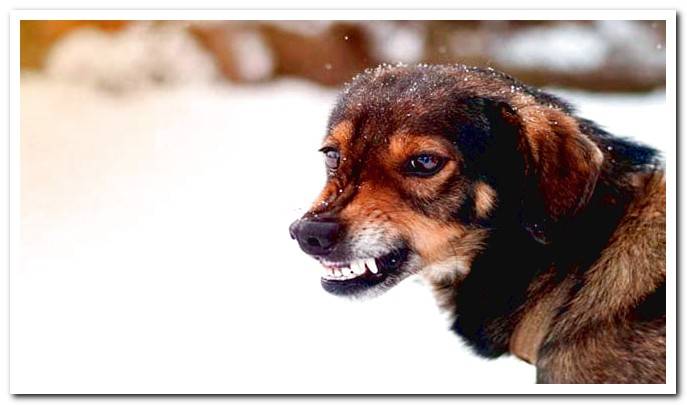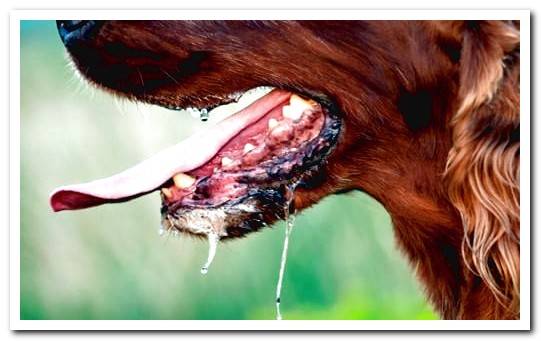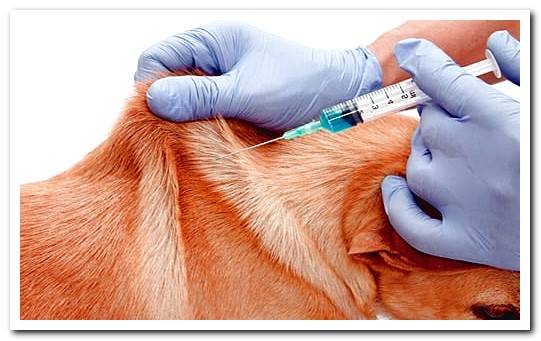
Rabies is a viral zoonotic disease of the Rhabdoviridaes family, which affects the nervous system causing acute encephalitis. It affects mammals including dogs and of course, humans.
This disease is spread throughout almost the entire planet and can be fatal if it is not treated, that is why it is so important to vaccinate our dog against it every year or two years, depending on the country where we live.
From Dogsis we offer you all the necessary information to know, control and prevent the rabies virus in our dog and thus prevent it from infecting us.
- You may also be interested in: Dog Immunization Schedule.
Index of contents
- 1 How is Rabies disease transmitted?
- 2 Main symptoms of rabies in dogs
- 2.1 Early symptoms of rabies
- 2.2 Characteristic symptoms of canine rabies
- 2.3 Latest symptoms of rabies virus
- 3 How to prevent and cure rabies
How is Rabies disease transmitted?
Anger it is an infectious virus that is transmitted through the saliva, blood, or feces of an infected animal. That is, if a dog with rabies bites our dog, or our dog comes into contact with the saliva or feces of a dog with rabies, it will also become infected.
The same is true of us humans. If a dog with rabies bites us, it will infect us with the virus, making us infected too.. If this happens, we must go to a hospital quickly.
But not only dogs can infect us with rabies, a cat, a mouse or even a bat can easily infect us if we come into contact with their saliva, blood or feces. Even if we eat the marrow of an infected animal, we can still get it.

Main symptoms of rabies in dogs
We should know that the rabies virus can even take two months of incubation, which means that a dog can have rabies, but do not show symptoms for two months since the contagion occurred.
As it is a virus that affects the dog’s nervous system, the symptoms of rabies are easily distinguishable, although a dog does not necessarily have to show them all.
Early symptoms of rabies
This virus progresses progressively so the symptoms will increase and worsen over the days, even new symptoms characteristic of an advanced state of the disease will appear.
The first thing we will notice in a dog infected with rabies is:
- Light sensitivity
- Tremors / Chills
- Nervousness / Anxiety / Stress
- Strange changes in behavior
- Serious symptoms of rabies
Once the first days have passed, where we will appreciate one or more of the aforementioned symptoms, we will appreciate how new symptoms appear more associated with rabies, such as aggressiveness.
Characteristic symptoms of canine rabies
In dogs where the disease has been developing for about a week, we can appreciate these symptoms:
- Increased aggressiveness / Attempts to bite everything and everyone
- Insomnia / disorientation
- Fear of water / Loss of appetite
- Onset of excessive salivation / slime
- Extreme sensitivity
Latest symptoms of rabies virus
After a week with the virus active, symptoms begin to intensify even further, passing to a fatal stage. Many animals do not reach this last phase since they die before, however, it is important to know the signs and signals that this stage provides us.
When the virus is completely deadly, dogs will display these behaviors and symptoms:
- Increased salivation, drool drool, foamy mouth, vomiting foam
- Trouble walking, stiff legs and trunk
- Breathing problems, cough
- Neck stiffness, inability to maneuver normally
- Lack of control of the jaw, which may remain open

How to prevent and cure rabies
Unfortunately today even it is not possible to cure rabies, there is no treatment for rabies, so if our dog is infected with this disease, it will end up dying or being sacrificed.
However, if we can do something to prevent our dog from getting rabies, prevent it with rabies vaccines.
The first rabies vaccine is given when the dog is still a puppy, usually when it is four to five months old. Then you will only need to get a booster shot, every year or two, depending on where you live.
If our dog is an adult and has not been vaccinated, don’t worry, you can also vaccinate it to prevent it against the rabies virus. The vaccine is effective on any uninfected dog.
Remember that the rabies vaccine is mandatory in all countries, it is not optional. If you don’t put it on, they can fine you or even take your dog away, so don’t hesitate, vaccinate your dog.
Other forms of prevention, once we have vaccinated our dog, is to avoid entering areas where there are wild animals that can bite our dog, prevent our dog from getting together with unvaccinated dogs, etc … The rabies vaccine is highly effective , but not one hundred percent.
